Jhuley Lal can be better defined as the deity of Sindhi Folklore, rather than associating him with Islam or Hinduism. Like many spiritual places of Sindh, his shrine in Odero Lal is jointly used and visited by both Muslims and Hindus. Sindh is an ancient land of deep historical value, it does not belong to a religion or a caste but is shared by her people in celebration of Divine Love that exceeds all religious boundaries. Many saints have passed through these lands, and Jhuley Lal is the patron saint of travellers. He is depicted sitting on a lotus flower, the indigenous flower of the Indus Delta, and riding on a Palla fish of the River Sindhu.
The exhibition Jhuley Lal, curated by Saima Zaidi and shown at the Mohatta Museum Gallery, is a collaborative project between Numaish Karachi and Thiss Studios Lahore. A part of this exhibition will travel to the London Design Festival 2024. Supported by the British Council, Pakistan. It is a celebration of the rich Sindhi art and craft heritage in modern times. The exhibition was a culmination of a three-part Residency in Shikarpur, Khairpur and Karachi, that invited Pakistani and British artists and designers, and introduced them to the world of Sindhi artisans who have been practising their hereditary craft passed onto them through centuries. The three practices that this Residency focused on were woodworking, basket weaving and Banarsi Silk-Handloom.
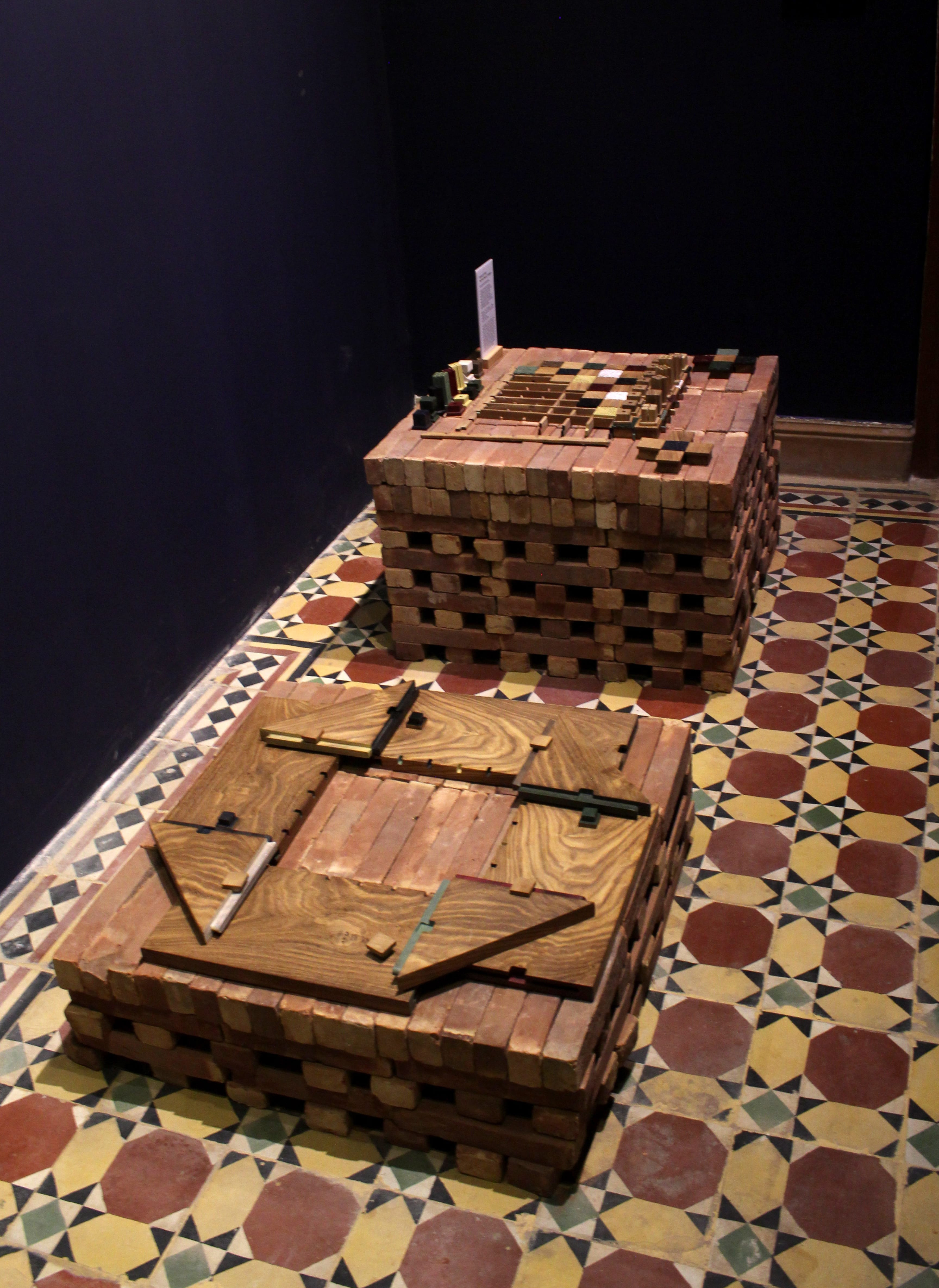
The artisans include Abdul Qadeer, Abdul Rauf, Ali Haider, Aushaq Ali Babalani, Banda Ali, Barkat Ali Babalani, Salman Ali Babalani, Sarfraz Ali and Shahid Hussain Bhatti from Shikarpur; Ali Raza, Mohammad Hassan, Sanya, Muskan, Mumtaz and Fahmida Vistra from Khairpur; and Islamuddin Ansari, Mohammad Yaseen, Mohammad Zaheer Ansari, Mahmood Hasan Ansari and Yasir Ansari from Karachi.
Ali Reza Dossal, Arif Mahmood, Claudia Walton, Dan Pope, Irene Albino, Muzzumil Ruheel, Nele Bergsman, Saima Zaidi, Shaukat Ali Khokhar, Haniya Aslam, Shamoon Haider, Tahir Mahmood and Zahra Ebrahim are the designers collaborating for the exhibition.
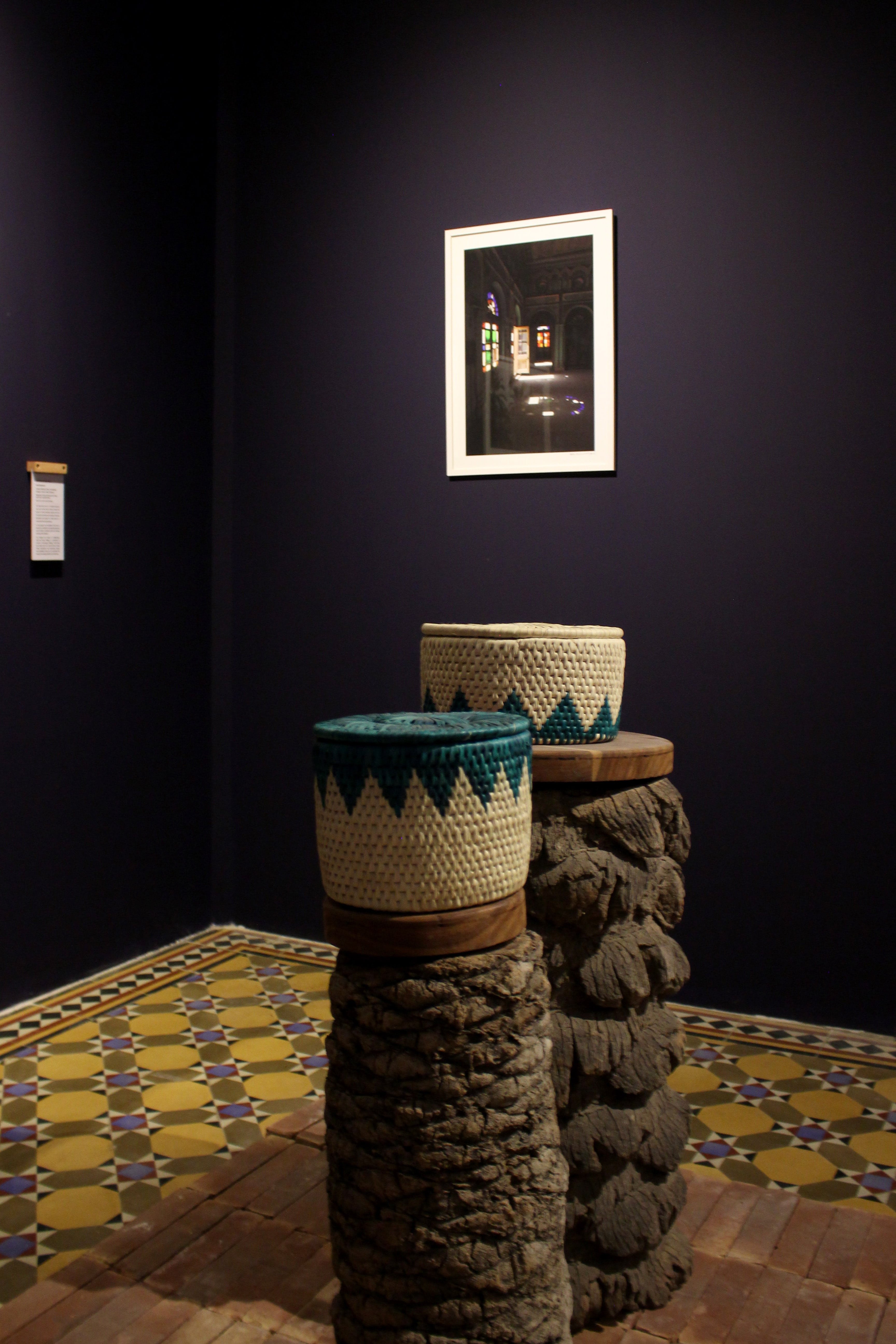
The works created during this residency blend traditional crafts and contemporary aesthetics, creating usable pieces of art. As one enters the room, the first installation called the “Family Portrait” by Nele Bergmans and Shaukat Ali Khokhar pays an homage to the excellence of wood craftsmen in Sindh. It is an installation featuring found wooden panels and pillars from old havelis in Shikarpur. The exquisite craftsmanship has unfortunately found itself being associated with “lowbrow art cultures” by the elite art institutions that run the industry now. However, history tells us that such distinctions would be absurd in South Asia, where artisans and craftsmen created works of unparalleled beauty that now adorn the museums of Europe and America.
“The Date Palm Tree” by Nele Bergmans is a reimagined tree. The artist/designer repurposed an old stump of a date tree as a stool and the weaved palm leaf basket as its head. The Badaan Chiragh Lamps and Badaan Baithak by Ali Reza Dossai and Claudia Watson broughT another utilitarian spin to the reclaimed wood from Shikarpur and Khairpur.
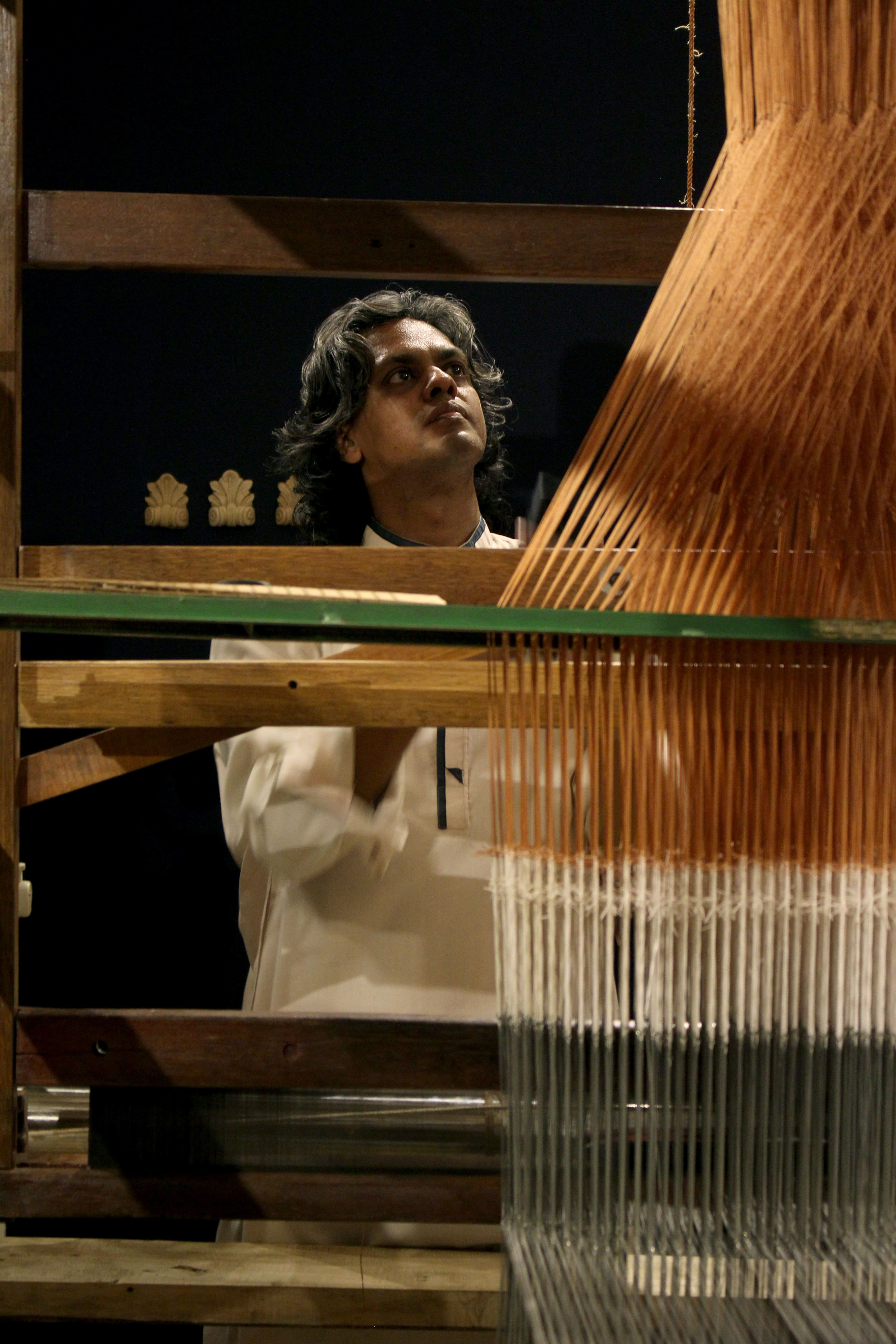
Another impressive wood based project is a cleverly designed chess board and table set up by Saima Zaidi, Zahra Babalani and Salman Babalani. “Shatranj ke khiladi” was inspired by block printing and finds a very minimalist yet full of detail approach in building a chess set. A reimagined Moora seat by Dan Pope as focuses on the beauty of natural rose wood and transforms it into a versatile stool-cum-floor seating.
In the older days, the artisans from South Asia had rich patrons who would commission them for their havelis and personal projects. As the culture of patronage faded away with the onslaught of industrial mass production, these artists have found themselves in a very difficult position. While in countries like Japan, the government takes over the responsibility to preserve and support their craft traditions, the government in Pakistan has a very different approach. Not only are they ignorant of the rich handicraft traditions, but also the little money that is allocated towards their preservation is eaten by corrupt ministers and bureaucrats. The result of this is a fate of poverty for the extremely talented artisans of our country. The design objects that emerged out of this residency is an invitation for more artists and designers in Pakistan to find innovative ways of transforming these dying skills and to rejuvenate our spaces using usable pieces of art that marry classical and contemporary aesthetics and also create employment opportunities for artisans who do not have access to urban spaces.
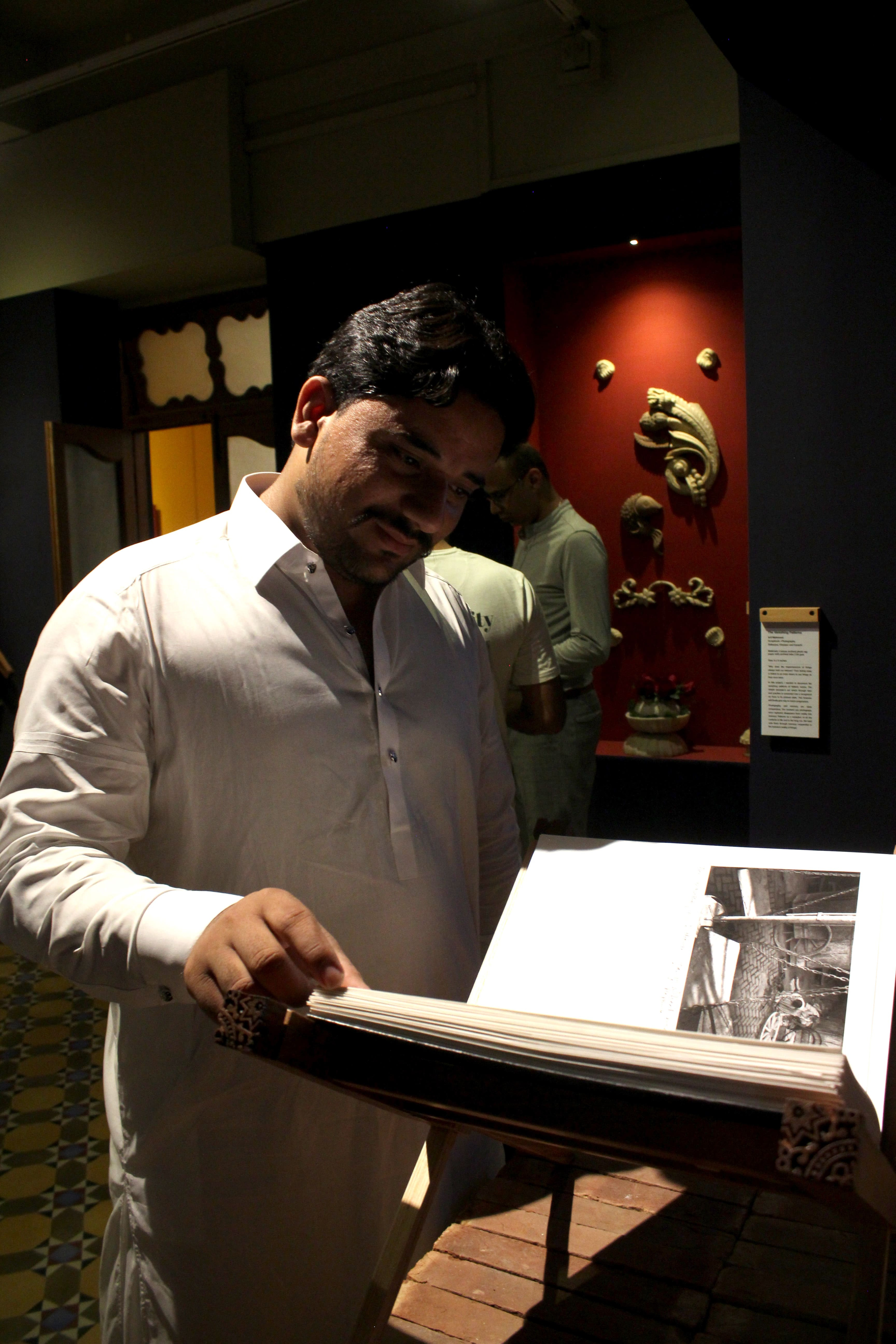
The Karachi part of the residency focused on Banaras Colony. Banarsi cloth has a rich history in South Asia. The luxurious fabric has been one of the greatest trade materials of India, worn by rajas, emperors, noblemen and masses alike. As part of the installation for Banarasi Cloth, a large loom was commissioned to be displayed alongside the cloth “Rosetta” designed by Irene Albino and Muzammil Ruheel. On the loom, the punch card that is used to create patterns in the fabric displays an interesting binary like design. The pattern reads “Aab-e-Rawan” or “Flowing Water”, an ode to the lightness and flow of the fabric. As the light from the windows behind the fabric seeps though it, the qualities of this incredible materials shines.
The Banaras Colony is one of the most tragic yet beautiful tales to come out of Karachi. Many weavers from across South Asia left their hometowns to settle in the outskirts of Karachi for the promise of livelihood that it makes to each of its inhabitants. However, as the tides of fate changed for Karachi since the 90s, Banaras Colony was also enveloped in its violence. The production of Banarsi, that had been worn by royalty of the world, is in trouble. Today, when cheap fabrics can be imported from China, people rarely are willing to pay the fair price for it. The spotlight that this residency provides, through displaying the loom and incredibly woven samples alongside it, hopefully will help in creating a new wave of patrons for it.
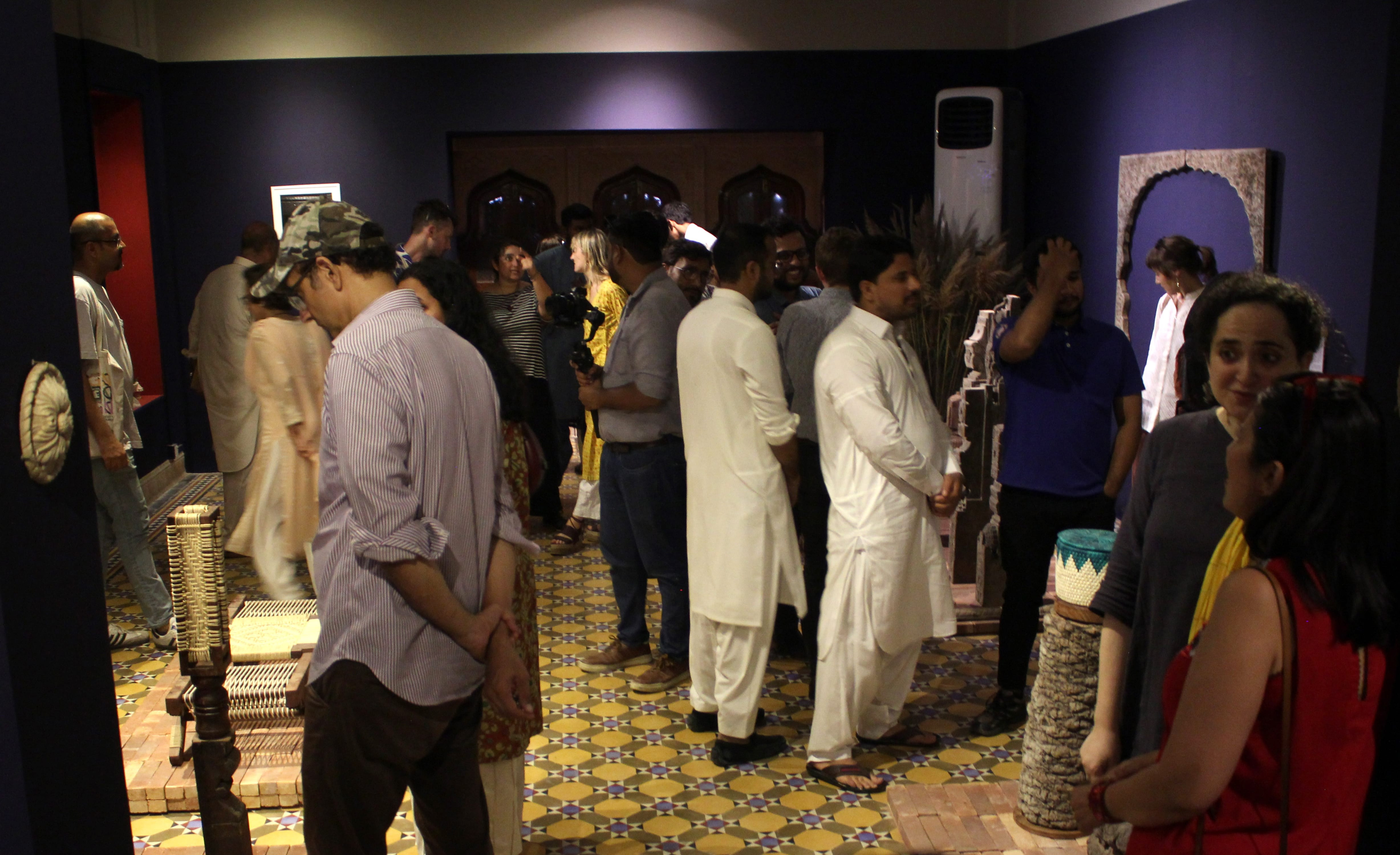
The works in the exhibition were assisted by breathtaking photographs by the renowned Arif Mahmood. He documented his experiences on the field, each frame giving us a window into the workshops of the artisans who make this magic possible. It is refreshing to be able to experience the behind the scenes alongside the final works, something many curators and galleries seem to frown upon. The reason for their disapproval isbecause they want the audience to perceive art without consideration of the artist’s intentions. However, the works created in Jhuley Lal are not personal, they speak in a universal language that handmade objects often do. It is a language of beauty and humanness that the artisan pus into every single piece. Arif Mahmood's photographs bring us into that world but also creates a thin boundary where we understand that despite our understanding his experiences are unique to him. A handmade book compiling a collection of all his photographs for the project has handwritten notes on them that detail his personal epiphanies and experiences.
Jhuley Lal challenges the boundary between art and craft that the contemporary art industry so often tries to make. It also challenges the barrier to entry that designers and craftsmen often face when entering the commercial art market. Art schools have been defining what is considered to be art for way too long. In a world where Duchamp’s “Urinal” is considered art, but intricate fabrics like Banarsi are not, we must question the definition of what makes art and who defines it. Should art only be the garments designed by some White high-end haute couture designer displayed in the MET? Why are the intricately designed wedding dresses that South Asian women have worn through centuries not treated with the same awe? The truth of the matter is that artistry in South Asia was passed on from Master to Disciple, and each had their individual understanding of the matter that uniquely subscribed to the idea of Divine Beauty. It is foolish to let anyone decide what art is for you, we get no points for loving the white cube, even if all the “big people” love it.
Lulu Lokhandwala is a visual artist and researcher. You can follow her work on Instagram at @luluwa.lokhandwala
All facts and information are the sole responsibility of the writer
